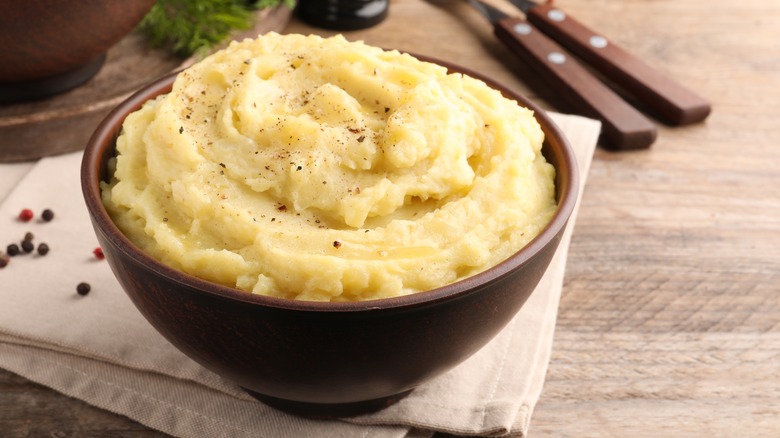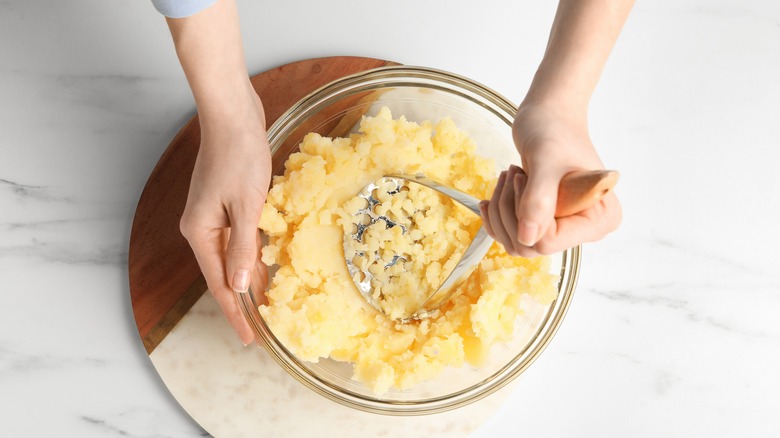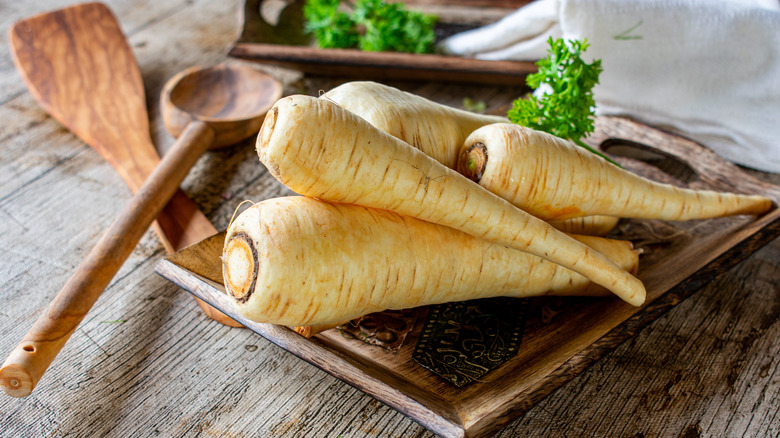Your Mashed Potatoes Have Been Missing Parsnips All Along
Mashed potatoes are a perfect side dish. Not only do they come together relatively quickly, but they require only a few ingredients to transform bland, hard tubers into delicious, fluffy clouds. A sprinkle of salt for flavor and a smattering of dairy products create that crave-worthy creamy consistency. It's hard to improve on this classic, but there's an unexpected ingredient that makes mashed potatoes even better: parsnips.
If you have not tried parsnips before, combining them with potatoes is a good way to introduce them into your home cooking. At first glance, a potato-parsnip mash may not look much different from your regular all-potato recipe, but this underappreciated root vegetable adds a nutritional boost, offering a diverse array of vitamins, minerals, and fiber, as well as a more complex and slightly sweet taste. Still, both potatoes and parsnips are fairly mild in flavor, making them great bases for bold seasonings and add-ins, or perfect companions for a generously spiced main course.
Making the most of your mash
When it comes to getting parsnips ready to mash, the process is similar to that of potatoes. These root vegetables, grown underground, first need to be thoroughly washed and scrubbed. (You can opt to peel them, but for fresh produce, there is a high concentration of nutrients stored in the peel. Leaving your vegetables intact will add vitamins and minerals to your meal.) Parsnips can be eaten fresh and, in their raw state, have an earthy, peppery flavor with a slight sweetness due to their high starch content. Cooking parsnips amplifies this sweetness and softens the other flavors.
If you want to lean into the sweeter notes of parsnips and make your side dish more colorful, try swapping out the usual Yukons used in mashed potatoes and pair your parsnips with sweet potatoes instead. If you're craving something more savory, add miso and garlic for a perfect umami combo to elevate your potato-parsnip mash.
Why parsnips and potatoes make sense nutritionally
Potatoes are nutritious and sustaining on their own, but are composed primarily of carbohydrates, resulting in a high glycemic index not suitable for certain dietary restrictions, including those for people with diabetes (via Healthline). A 2022 study by the journal "Foods" shows that one way to help mitigate the glycemic response caused by consuming carbohydrate-rich foods is to pair them with foods rich in soluble fiber.
According to WebMD, parsnips are not carb-free foods, but they do contain a high amount of both soluble and insoluble fiber, so the sugars do not absorb into the bloodstream all at once. (A one-cup serving of parsnip provides 6.5 grams of fiber.) Besides being a perfect partner for potatoes, parsnips are a rich source of vitamins and minerals on their own. These root vegetables are rich in antioxidants, vitamin C, vitamin K, and folate, which, as noted by WebMD, are key for supporting the immune system and blood health.



